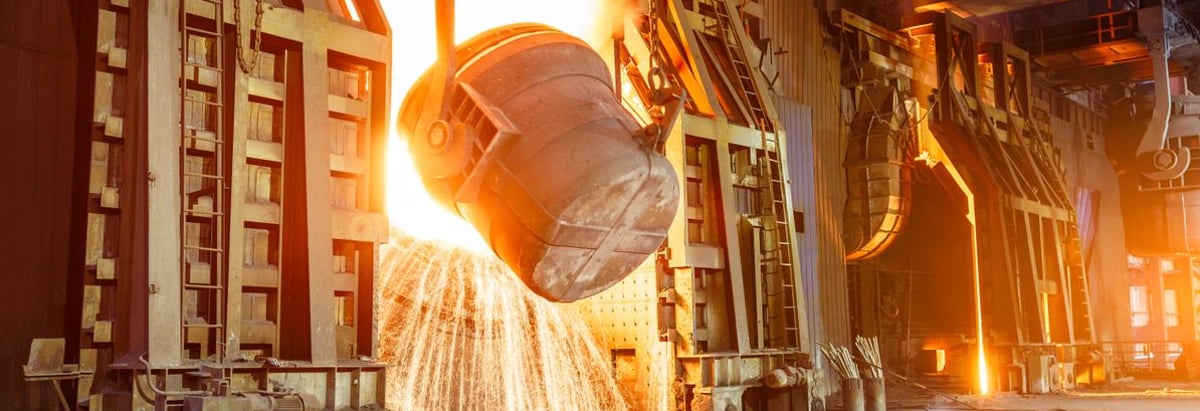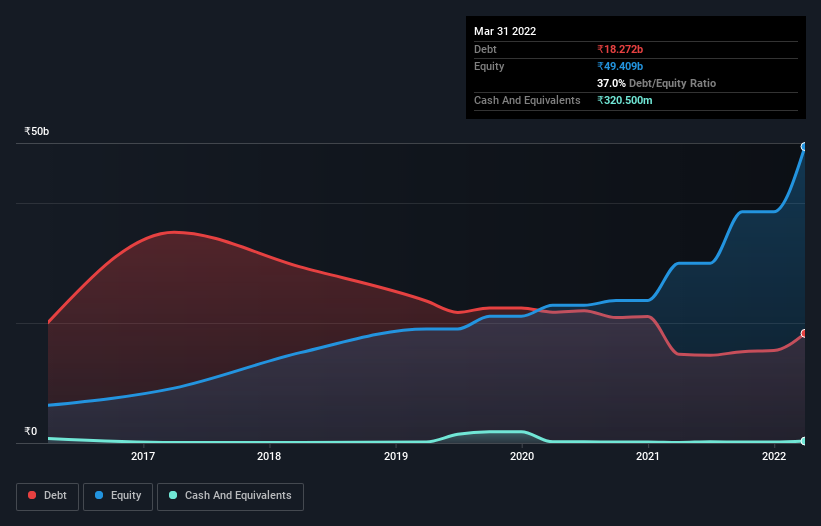- India
- /
- Metals and Mining
- /
- NSEI:JSLHISAR
Here's Why Jindal Stainless (Hisar) (NSE:JSLHISAR) Can Manage Its Debt Responsibly

Howard Marks put it nicely when he said that, rather than worrying about share price volatility, 'The possibility of permanent loss is the risk I worry about... and every practical investor I know worries about.' So it might be obvious that you need to consider debt, when you think about how risky any given stock is, because too much debt can sink a company. We note that Jindal Stainless (Hisar) Limited (NSE:JSLHISAR) does have debt on its balance sheet. But should shareholders be worried about its use of debt?
What Risk Does Debt Bring?
Debt and other liabilities become risky for a business when it cannot easily fulfill those obligations, either with free cash flow or by raising capital at an attractive price. If things get really bad, the lenders can take control of the business. While that is not too common, we often do see indebted companies permanently diluting shareholders because lenders force them to raise capital at a distressed price. Of course, plenty of companies use debt to fund growth, without any negative consequences. When we think about a company's use of debt, we first look at cash and debt together.
See our latest analysis for Jindal Stainless (Hisar)
What Is Jindal Stainless (Hisar)'s Debt?
The image below, which you can click on for greater detail, shows that at March 2022 Jindal Stainless (Hisar) had debt of ₹18.3b, up from ₹14.8b in one year. And it doesn't have much cash, so its net debt is about the same.

How Strong Is Jindal Stainless (Hisar)'s Balance Sheet?
The latest balance sheet data shows that Jindal Stainless (Hisar) had liabilities of ₹36.9b due within a year, and liabilities of ₹12.5b falling due after that. Offsetting this, it had ₹320.5m in cash and ₹28.5b in receivables that were due within 12 months. So its liabilities total ₹20.5b more than the combination of its cash and short-term receivables.
While this might seem like a lot, it is not so bad since Jindal Stainless (Hisar) has a market capitalization of ₹49.9b, and so it could probably strengthen its balance sheet by raising capital if it needed to. But we definitely want to keep our eyes open to indications that its debt is bringing too much risk.
We use two main ratios to inform us about debt levels relative to earnings. The first is net debt divided by earnings before interest, tax, depreciation, and amortization (EBITDA), while the second is how many times its earnings before interest and tax (EBIT) covers its interest expense (or its interest cover, for short). This way, we consider both the absolute quantum of the debt, as well as the interest rates paid on it.
Jindal Stainless (Hisar)'s net debt is only 0.80 times its EBITDA. And its EBIT easily covers its interest expense, being 15.3 times the size. So you could argue it is no more threatened by its debt than an elephant is by a mouse. Even more impressive was the fact that Jindal Stainless (Hisar) grew its EBIT by 139% over twelve months. That boost will make it even easier to pay down debt going forward. When analysing debt levels, the balance sheet is the obvious place to start. But it is future earnings, more than anything, that will determine Jindal Stainless (Hisar)'s ability to maintain a healthy balance sheet going forward. So if you're focused on the future you can check out this free report showing analyst profit forecasts.
Finally, while the tax-man may adore accounting profits, lenders only accept cold hard cash. So we clearly need to look at whether that EBIT is leading to corresponding free cash flow. Looking at the most recent three years, Jindal Stainless (Hisar) recorded free cash flow of 39% of its EBIT, which is weaker than we'd expect. That's not great, when it comes to paying down debt.
Our View
Happily, Jindal Stainless (Hisar)'s impressive interest cover implies it has the upper hand on its debt. And the good news does not stop there, as its EBIT growth rate also supports that impression! Taking all this data into account, it seems to us that Jindal Stainless (Hisar) takes a pretty sensible approach to debt. While that brings some risk, it can also enhance returns for shareholders. The balance sheet is clearly the area to focus on when you are analysing debt. However, not all investment risk resides within the balance sheet - far from it. For example, we've discovered 3 warning signs for Jindal Stainless (Hisar) (2 are concerning!) that you should be aware of before investing here.
When all is said and done, sometimes its easier to focus on companies that don't even need debt. Readers can access a list of growth stocks with zero net debt 100% free, right now.
New: Manage All Your Stock Portfolios in One Place
We've created the ultimate portfolio companion for stock investors, and it's free.
• Connect an unlimited number of Portfolios and see your total in one currency
• Be alerted to new Warning Signs or Risks via email or mobile
• Track the Fair Value of your stocks
Have feedback on this article? Concerned about the content? Get in touch with us directly. Alternatively, email editorial-team (at) simplywallst.com.
This article by Simply Wall St is general in nature. We provide commentary based on historical data and analyst forecasts only using an unbiased methodology and our articles are not intended to be financial advice. It does not constitute a recommendation to buy or sell any stock, and does not take account of your objectives, or your financial situation. We aim to bring you long-term focused analysis driven by fundamental data. Note that our analysis may not factor in the latest price-sensitive company announcements or qualitative material. Simply Wall St has no position in any stocks mentioned.
About NSEI:JSLHISAR
Jindal Stainless (Hisar)
Jindal Stainless (Hisar) Limited manufactures and sells stainless steel products worldwide.
Flawless balance sheet and fair value.
Market Insights
Community Narratives




